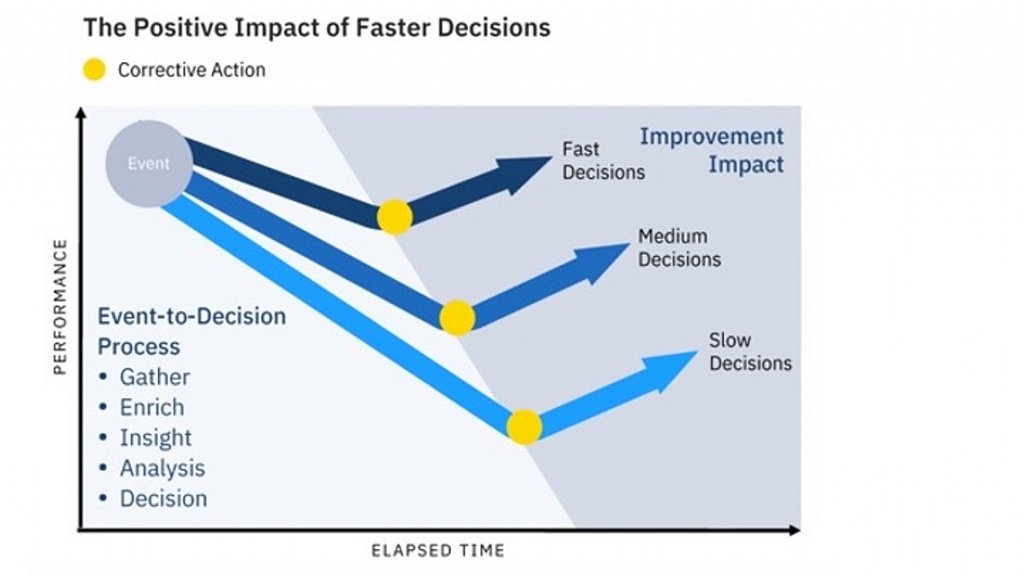The Challenge of Manufacturing Data Management
02.11.2020
What happens when automation and plant IT teams get past their differences and work together effectively? A chance for the company to outperform the competition and make progress on Industry 4.0 projects.

Recent research conducted by Tech-Clarity (with input from Automation World subscribers) for the report, “The Manufacturing Data Challenge: Lessons from Top Performers,” shows that top performers in the manufacturing industries are far more likely to have automation or operations technology (OT) teams working closely with plant IT. In fact, over half have these disciplines in the same organization or tightly integrated.
However, beyond the organizational issues of OT and IT work together, there are many other aspects of manufacturing data management that everyone needs to tackle.
Investing in what matters
Most manufacturers want to create a new, more digital, and streamlined future. Whether they call it Industry 4.0, Smart Manufacturing, Digital Transformation, or something else, industry is moving into new ways of working.
Regardless of the terminology used, plant data management is at the core. The complete and correlated set of data about actual production is the foundation on which connectivity, automation, and analytics can succeed. Through our research, we identified seven programs relating to manufacturing data:
* Collecting data from many distributed sources in many formats;
* Cleansing the data to eliminate errors;
* Normalizing the data to come to agreement and a coherent picture;
* Storing the data that can best help make decisions and improve;
* Ensuring that stored data is consistent enough to use;
* Enriching data with context—from other data streams typically; and
* Analyzing the data both for instant plant action and off-line.
Most respondents to the surveys we conducted believe all six of these are important or critical to their success with Industry 4.0.
Over half of the respondents actively use these two plant data management programs:
* Integrating equipment, plant, and enterprise systems (54%)
* Putting OT data into context with plant IT data (52%)
In both cases, a larger percentage—more than 80%—believe those plant data management programs are important. Once a company recognizes their importance, they must invest in these plant data management programs. But these are just the top two areas; other aspects of plant data management are not yet in active programs for most production companies.
Integration: a perennial challenge
Integration among plant floor data sources has been a topic of conversation for decades. Even still, it is a challenge that consumes considerable resources. We asked how much is required to integrate and maintain the integration between MES, quality, maintenance, scheduling, IIoT, and other equipment or machine data. More than 80% of respondents indicate a moderate (29%), a lot (28%), or a great deal (28%) of time, expertise, and effort are required. (Figure 1)

Part of the integration challenge comes from the diverse nature of plant data. The variation in formats, granularity, and time periods is inevitable. The result is massive complexity in correlating various streams and types of data.
Yet, it is an essential element for Industry 4.0 success. Getting data to flow across the facility will create significant opportunities for insights into the process and for analyzing the overall production operation.
Top performers’ results
Our research methodology identifies a set of responses for comparison we call top performers. In this study, these top performers are those who rated themselves at least nine of 10, where agility and continuous improvement (CI) each count for five. Top performers make up about 35% of the response base.
Top performers are three times as likely to have made significant progress with their Industry 4.0 efforts. They not only have several projects going on, they feel they are on a path to even greater success.
That combination of having a steady focus on what to change overall plus how to respond when conditions change led to other benefits. For example, top performers were at least two times more likely to have improved dramatically (more than 15%) over the past three years on a range of key performance indicators (KPIs).
Their greater improvement appeared in KPIs that indicate how well a company can keep customers satisfied: time to market, quality, and perfect orders. Top performers were also far more likely to improve dramatically on operational metrics, including yield, capacity utilization, and equipment availability.
So, what plant data management practices do they use to achieve this success? Not surprisingly, they are doing things differently across people, process, and technology.
People practices
More of the top performers have already addressed the IT/OT divide. They are far more likely to have IT and OT either in the same organization or tightly integrated (more than 56% of top performers have done this vs. just 36% of non-top performers). A close working relationship between these groups helps overcome many of the thorniest issues that have traditionally plagued the relationship between the two groups that control most manufacturing data, automation, and plant IT.
Top performers are also more likely to be fully staffed with production domain experts and people to serve as a liaison between IT and OT. These are crucial positions. There are indications that the skills shortages in production are likely to get more severe. And many Industry 4.0 and advanced analytics projects fail due to a lack of people who understand both the information systems issues and the production process needs. A liaison can help to bridge that gap.
Process capabilities
Where do the manufacturing data processes and the operations processes most need to come together? We identified six areas around speed of delivering data, working across disciplines, agreement on “single source of truth,” integration between IT and OT systems, and putting data into a common context for analysis.
Top performers are three times as likely to have excellent capabilities in these two dimensions:
* Collaborating among manufacturing, IT, and automation teams (39% of top performers vs. 9% of non-top performers)
* Providing plant data access fast enough to impact performance (39% of top performers vs. 12% of non-top performers)

These two issues establish a foundation for the improved performance the top performers enjoy. Cross-functional collaboration can maximize their ability to make improvements that have positive, long-term business impacts. It also reduces the friction and disagreement that can prevent data from flowing where it needs to go promptly. As shown in Figure 2, speed also matters. Anyone who works with automation knows that fast decisions and control loops are essential to a successful system.
Technology used
With the people and processes lined up, technology can have its full impact. Cross-functional collaboration and speedy processes typically rely on savvy use of technology.
Therefore, it’s not a big surprise that top performers use commercial technologies more widely than others. They are nearly twice as likely to use intelligent, instrumented automation (52% vs. 27%). It is this type of technology that has unlocked the possibility for Industry 4.0 to succeed. Despite their use of advanced technologies, nearly half of even top performers still have some OT replacement, upgrade, and augmentation work to do.
Top performers are more likely to use advanced manufacturing data approaches as well. These include digital twin of the plant, IIoT platforms, and advanced analytics.
It’s important to note here that successful manufacturing data management is not all about new technologies and approaches. Top performers are also more likely to use established commercial applications such as MES (56%) and PLM (52%) as primary systems for manufacturing management.
Meeting the manufacturing data challenge
For Industry 4.0 to become a reality, companies must meet the manufacturing data management challenge head-on. This requires a focus on harmonizing data sets, integrating across the diverse data in a plant, and putting it all into context to convert data into information or analyze it for insights. Plus, this all needs to be done fast enough to impact performance.
Companies need not only to recognize how important these manufacturing data management issues are, they need to invest in the people, processes, and technologies required to adequately address them. Top performers are already doing this. Their rate of improvement from their current baseline may threaten competitors.
Despite this advantage held by the top performers, any manufacturer can make the investments and get on the path. It’s not too late to gain the benefits of being a top performer. Manufacturing data management initiatives are a clear path to making progress on Industry 4.0. Start with a strategy, then staff, and spin up programs on the most pressing aspects for the specific business.
And don’t assume that technology investments have to be in new technology. Having the right primary systems in MES, PLM, finite scheduling, and instrumented, intelligent automation is the best start.
It’ also important to note that, even with investments, the path may not be easy. Even top performers find the integration of manufacturing data difficult. So, pay attention to new approaches. Validate their fit as well as evaluate whether the current manufacturing data infrastructure will support your future needs.
The Manufacturing Data Challenge eBook is available and free to download. To access the research report, visit https://tech-clarity.com/manufacturing-data-challenge/9673
Source: www.automationworld.com
Author: Julie Fraser - the vice president of research, manufacturing, and operations, for Tech-Clarity.





































